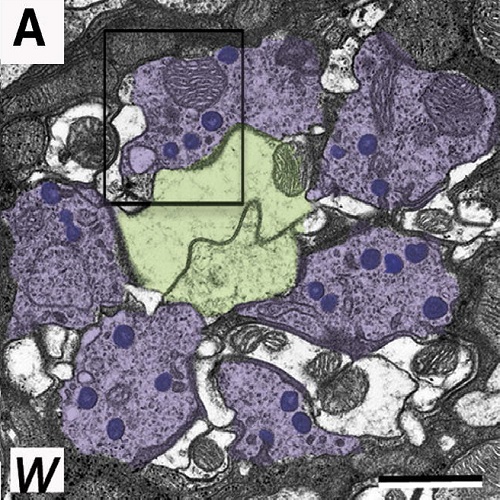DLin-7 is required in postsynaptic lamina neurons to prevent light-induced photoreceptor degeneration in Drosophila.
Inherited retinal degeneration in humans is caused by mutations in a wide spectrum of genes that regulate photoreceptor development and homeostasis. Many of these genes are structurally and functionally conserved in Drosophila, making the fly eye an ideal system in which to study the cellular and molecular basis of blindness. DLin-7, the ortholog of vertebrate MALS/Veli, is a core component of the evolutionarily conserved Crumbs complex. Mutations in any core member of the Crb complex lead to retinal degeneration in Drosophila. Strikingly, mutations in the human ortholog, CRB1, result in retinitis pigmentosa 12 (RP12) and Leber congenital amaurosis, two severe retinal dystrophies. Unlike Crumbs, DLin-7 is expressed not only in photoreceptor cells but also in postsynaptic lamina neurons. Here, we show that DLin-7 is required in postsynaptic neurons, but not in photoreceptors such as Crumbs, to prevent light-dependent retinal degeneration. At the photoreceptor synapse, DLin-7 acts as part of a conserved DLin-7/CASK/DlgS97 complex required to control the number of capitate projections and active zones, important specializations in the photoreceptor synapse that are essential for proper neurotransmission. These results are the first to demonstrate that a postsynaptically acting protein prevents light-dependent photoreceptor degeneration and describe a novel, Crumbs-independent mechanism for photoreceptor degeneration.

- Curr. Biol. 2013 Jul 22;23(14):1349-54
- 2013
- Neurobiology
- 23850283
- PubMed
Enabled by:
